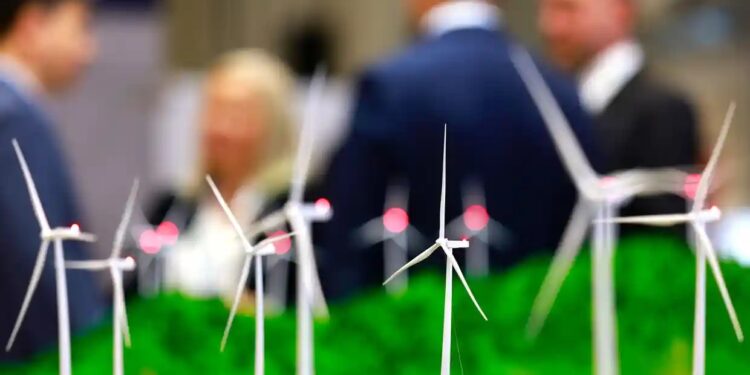The case for a rapid transition to renewables is stronger, but some developments are making it harder
On a breezy day in May, the Met Office issued a pithy forecast which would prove telling: “Quite windy.” In fact, on 25 May the UK set a record for wind power generation, 19.9 gigawatts – enough to cover more than half of Britain’s electricity needs or boil 3.5m kettles. So plentiful was the wind power that National Grid was forced to ask some turbines in the west of Scotland to shut down, as the network was unable to store such a large amount of electricity.
The episode represents a landmark which underlines both the progress of Britain’s renewables industry and the potholes in the road to replacing fossil fuels. Just six months earlier, global leaders met in Glasgow with renewable energy high on the agenda.
In the year since Cop26, the case for a rapid transition to green energy sources has been strengthened beyond simply decarbonisation, as countries have scrambled to replace Russian gas, bills have risen and the concept of “energy security” has shot up the public agenda. However, stopgap measures such as keeping coal-fired power stations active to get through the winter threaten to undermine and slow the energy transition.
As Cop27 nears, progress since last year’s iteration has been bumpy.
“Everything has changed, and nothing has changed,” says Keith Anderson, the chief executive of ScottishPower, speaking at the supplier and developer’s London offices. “We have a cost of living crisis, energy is being weaponised and the discourse is now around energy independence. And how do you solve energy independence? You invest in renewables, which can be controlled, and built at speed.” He adds: “Going harder and faster on renewables will deliver security, bring down prices and tackle climate change.”
Casimir Lorenz of the consultancy Aurora Energy Research says: “Most people are aware now that if we had invested much more and much quicker into renewables we would not have been as exposed to Russian gas.”
He adds: “Renewable developers have faced renewed pressure to finish projects and get them online while the prices in the market are very very high.”
However, this task has not been straightforward. Rampant global inflation and freight headaches post-pandemic have stretched supply chains. For solar developers, a boom in demand over the last year has also left firms requiring sharp elbows – and companies are attempting to diversify away from some Chinese suppliers amid allegations they have used forced labour.
In the UK, the renewables industry has been dragged into the political drama in Westminster. The former prime minister Liz Truss set her sights on blocking solar farms being built on agricultural land while indicating that restrictions on onshore windfarms would be lifted. The fate of both initiatives remains uncertain under her successor, Rishi Sunak.
Lorenz says a similar picture has been seen around Europe: “The development of renewables has been held up by economic factors but also regulatory and public resistance to renewables. That has escalated with political resistance, where we’ve seen populist countries come out against onshore wind to get people on side.” European wind turbine orders were down 36% in the three months up to October in the same period a year earlier.
Some renewables companies have also been in governments’ crosshairs after landing excess revenues from the surge in the wholesale price of electricity, which is tied to soaring natural gas prices.
“Regulators need to provide a stable investment platform,” says Richard Crawford of InfraRed Capital Partners, the investment manager for London’s Renewables Infrastructure Group, which has projects across Europe, from the UK to Sweden and Spain. “They need to manage the cost of electricity but also create a suitable environment for investors. We have had many periods in the past when prices have been beneath expectations and there’s no investment return.”
Crawford adds that revenue caps can act as a “negative investment signal” – making the cost of borrowing funds higher. As the industry is dominated by multinationals with projects in different countries, this can convince some companies to simply invest in an alternative market.
The economics should be appealing to policymakers. At a UK auction earlier this year offshore windfarm operators agreed to sell their power at record low price levels, as little as £37.35 per megawatt hour, 5.8% below the lowest bid in the previous auction in 2019.
Anderson argues that an age-old issue is holding back Britain’s renewables industry: planning. “If I can build a major, complex infrastructure project in 12 to 18 months then surely to goodness we can have a planning system that can deliver at the same timescale,” he says, shaking his head. To illustrate his point, he recounts how a planning official questioned the location of the East Anglia One North offshore wind project 12 years after the licence was awarded by former prime minister Gordon Brown in 2009.
National Grid announced this summer it was making a £54bn upgrade to the electricity network, the biggest since the 1960s, to help connect offshore windfarms more easily and enable battery storage facilities to connect up to store renewable power, a crucial issue in the industry.
Source: The Guardian



Recent Comments